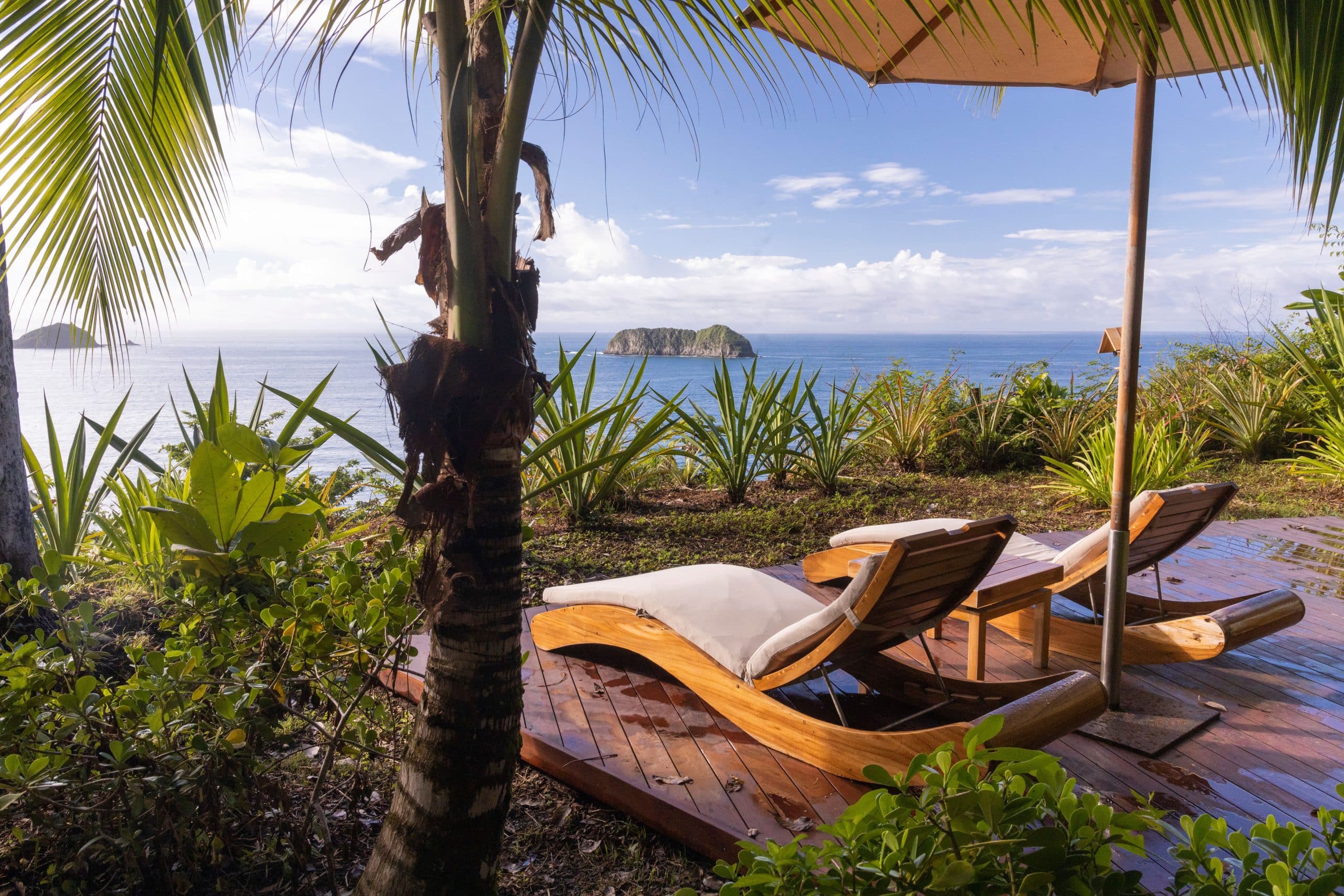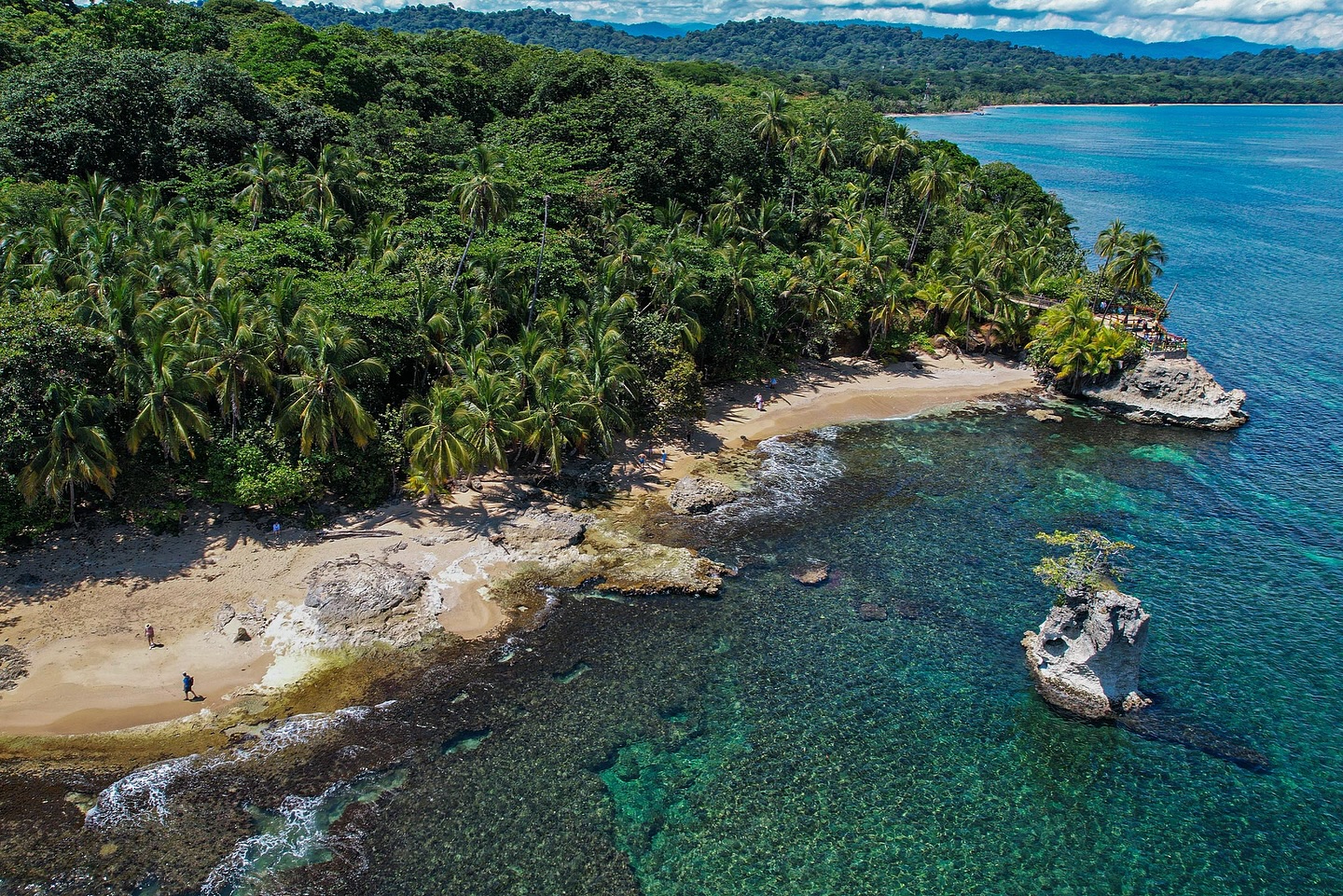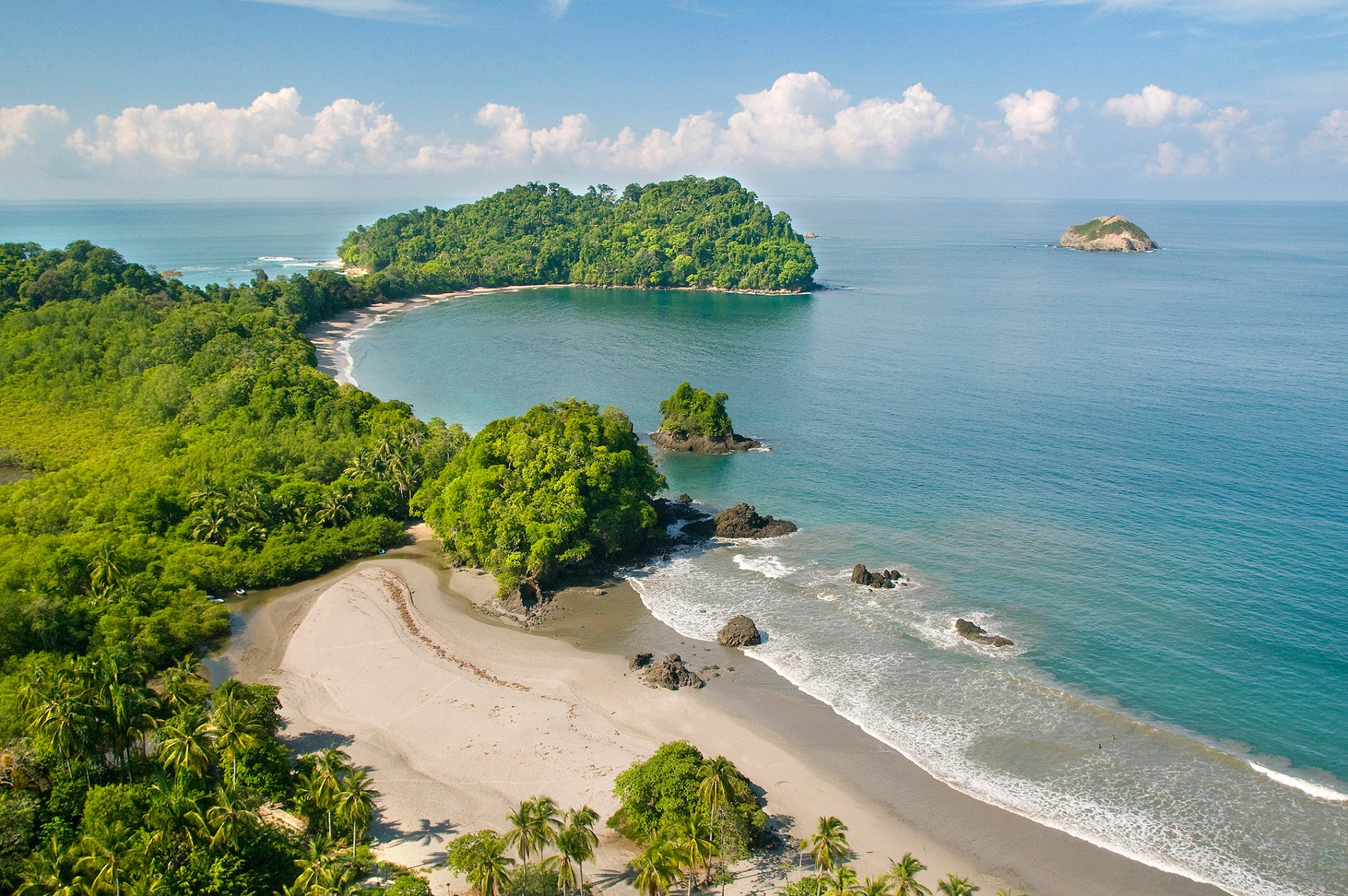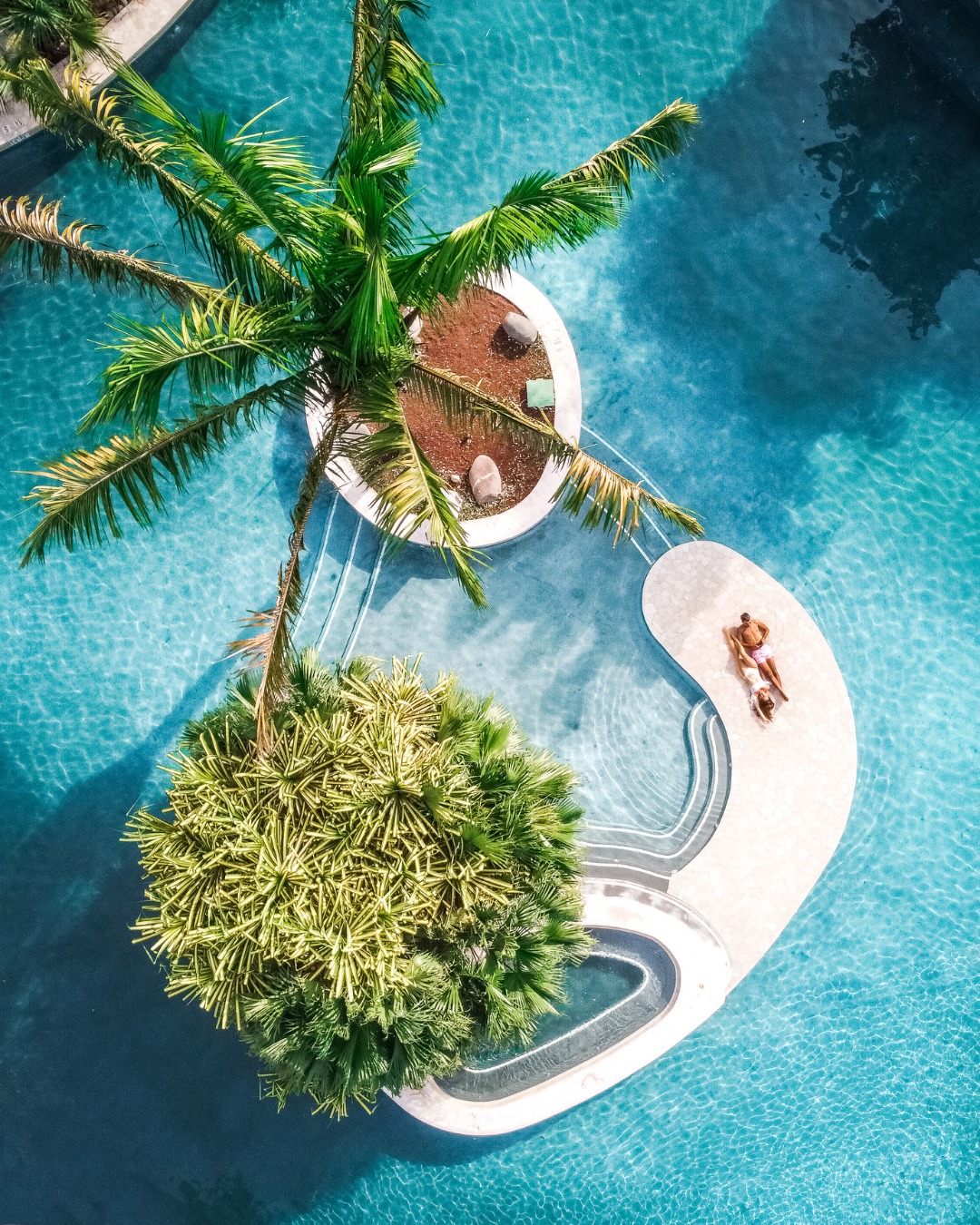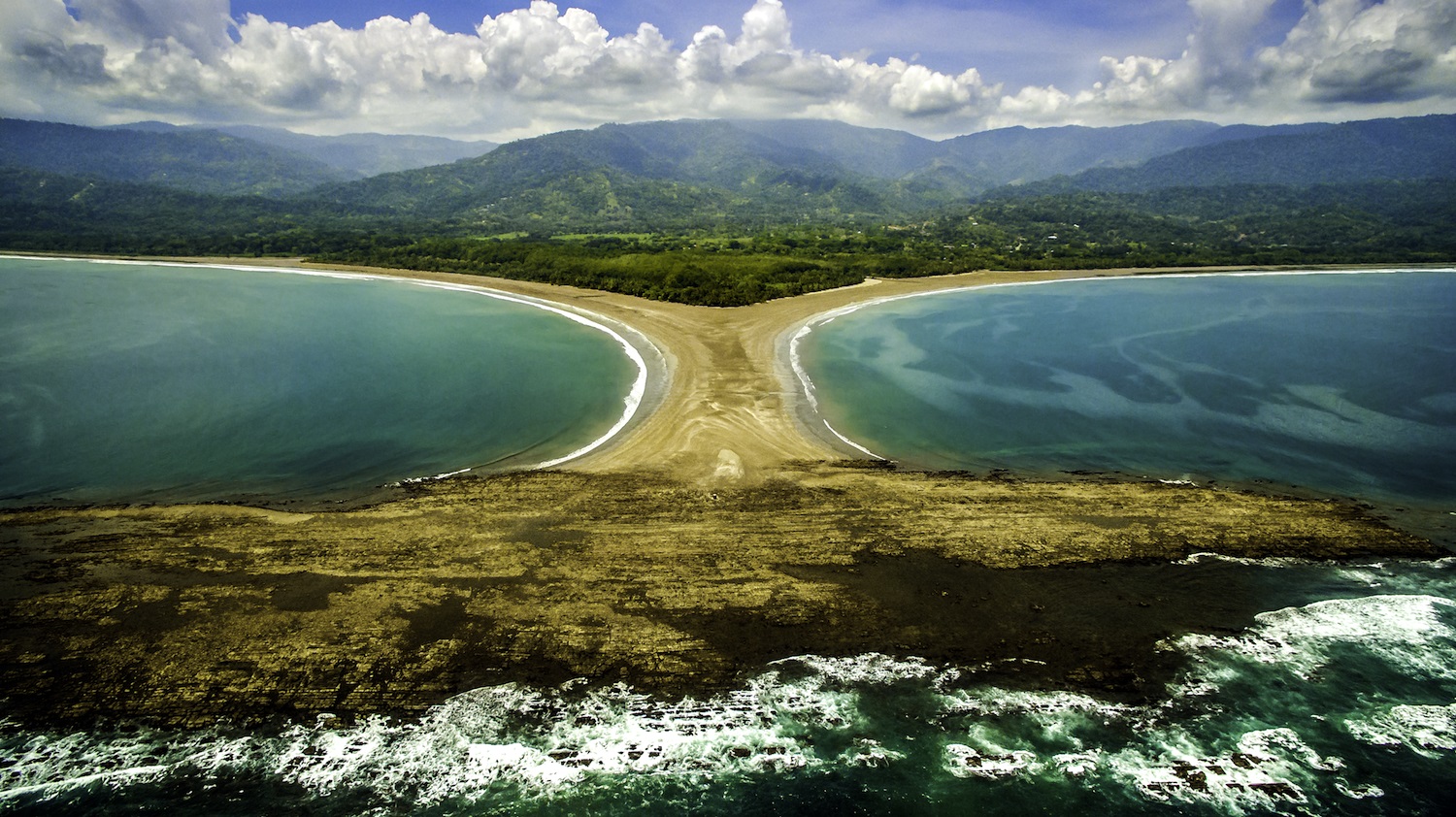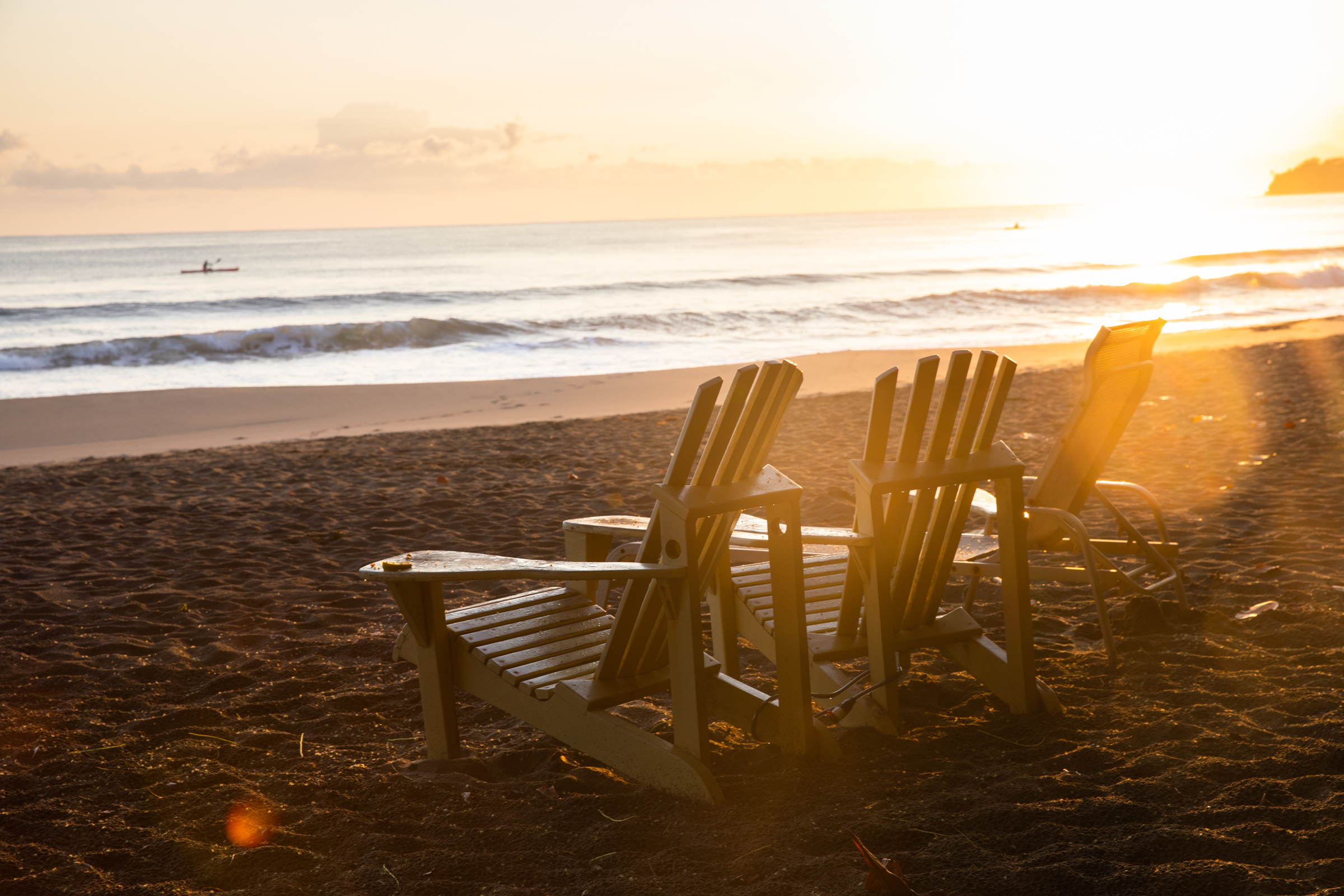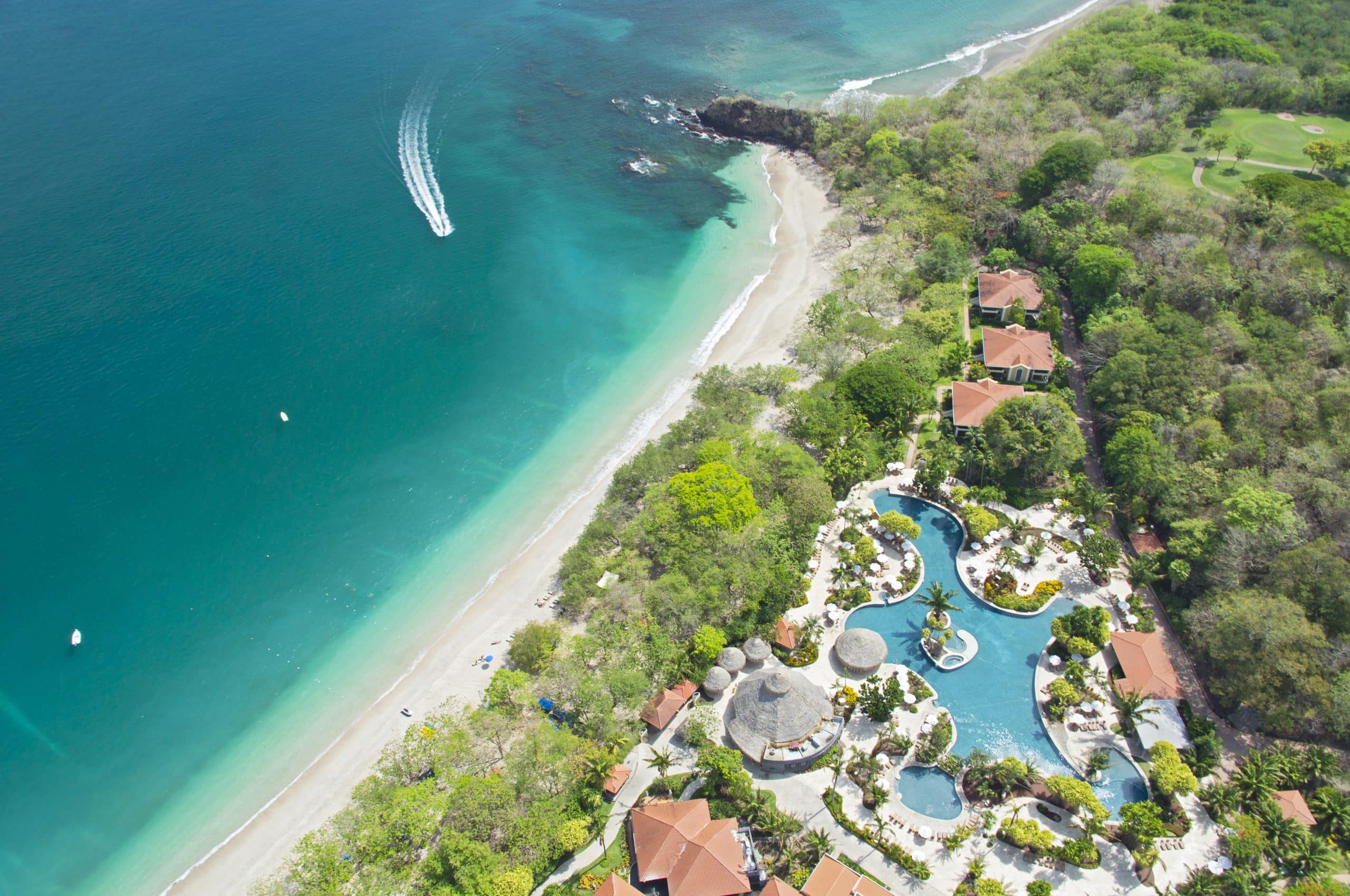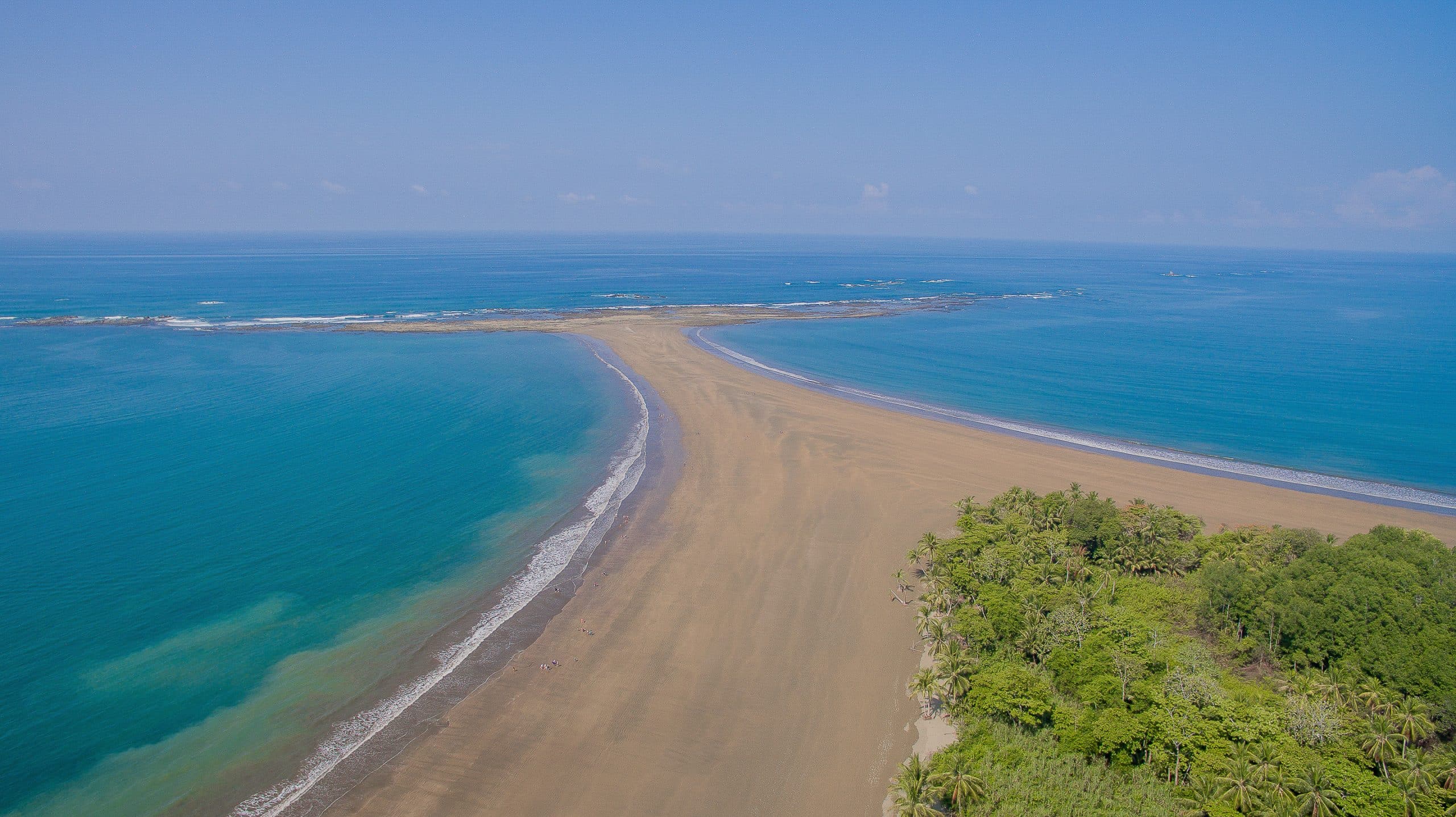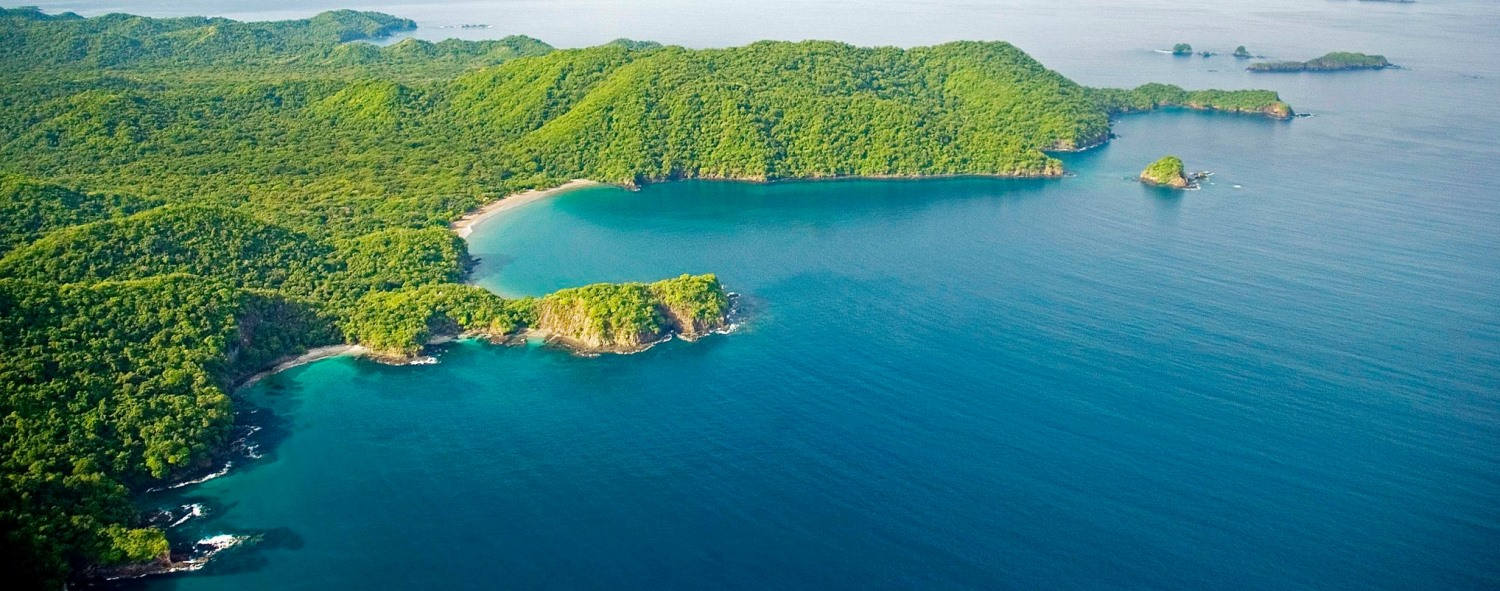
10 BEST Beaches in Costa Rica (& Where to Stay)
Last verified: September 2025 by Costa Rica Experts’ on-ground team
Costa Rica offers over 800 miles of coastline across two oceans, featuring diverse beach experiences from white sand paradises to volcanic black sand shores. After 40 years of planning Costa Rica vacations, our team has visited every major beach and can confirm: the country’s unique position between the Caribbean Sea and Pacific Ocean creates distinct coastal personalities that cater to every type of beach traveler.

Which Costa Rica beach is best for you?
- First-time visitors: Manuel Antonio – wildlife guaranteed, calm waters
- Surfers: Tamarindo or Santa Teresa – consistent waves, surf schools available
- Families with kids: Playa Samara or Punta Uva – shallow water, no riptides
- Snorkeling: Playa Conchal or Punta Uva – visibility up to 40 feet, reef access from shore
- Luxury seekers: Flamingo Beach or Papagayo Peninsula – upscale resorts, private beaches
- Remote escapes: Costa Ballena or Manzanillo – off-the-beaten-path paradises
- Yoga & wellness: Nosara or Santa Teresa – surf and wellness retreats
Why Costa Rica’s Beaches Are Unique
Geographic diversity creates distinct, beautiful beaches. The Pacific coast features calmer waters ideal for swimming and surfing, while the Caribbean side offers wilder, more untamed experiences. Volcanic activity has created both traditional white sand beaches and dramatic black sand coastlines.
Wildlife integration sets Costa Rica apart. Many beaches border national parks and protected areas, meaning visitors often encounter monkeys, sloths, and exotic birds directly on the beach or within minutes of the shoreline. Our clients regularly report seeing 3-4 species of monkeys at Manuel Antonio, whales at Costa Ballena (Aug-Oct & Dec-Apr), and sea turtles nesting at various beaches during season (July-October).
Year-round accessibility makes planning easier. Unlike seasonal beach destinations, Costa Rica’s tropical climate ensures beach activities are available throughout the year, though the dry season (December-April) offers the most predictable weather. The Caribbean coast stays drier during September-October when the Pacific experiences its rainiest months.
Quick Beach Comparison Guide
| Beach | Best For | Water Conditions | Wildlife | Distance from SJO | Coast |
|---|---|---|---|---|---|
| Manuel Antonio | First-timers | Calm, safe | Monkeys, sloths | 100 miles / 2.5 hrs | Pacific |
| Tamarindo | Surfing | Moderate waves | Sea turtles (seasonal) | 155 miles / 4 hrs | Pacific |
| Conchal | Snorkeling | Very calm | Tropical fish | 160 miles / 4 hrs | Pacific |
| Flamingo | Luxury | Calm bay | Marine birds | 165 miles / 4.5 hrs | Pacific |
| Costa Ballena | Whale watching | Moderate | Humpback whales | 110 miles / 3 hrs | Pacific |
| Nacascolo | Seclusion | Very calm | Sea life | 160 miles / 4 hrs | Pacific |
| Santa Teresa | Surf & yoga | Strong waves | Iguanas | 95 miles / 3.5 hrs* | Pacific |
| Nosara/Guiones | Wellness | Consistent surf | Birds, monkeys | 150 miles / 4.5 hrs | Pacific |
| Punta Uva | Families | Calm, protected | Coral reef fish | 130 miles / 4 hrs | Caribbean |
| Manzanillo | Adventure | Calm | Reef wildlife | 135 miles / 4.5 hrs | Caribbean |
*Requires ferry crossing. We often recommend a domestic flight.
Most Popular Beaches in Costa Rica:
Manuel Antonio, Manuel Antonio National Park

Best for: First-time visitors seeking wildlife encounters and pristine beaches
Why it ranks #1: Most wildlife sightings per visit according to park statistics
Manuel Antonio Beach ranks as Costa Rica’s most visited beach destination, combining easy accessibility with guaranteed wildlife sightings. This coastal gem borders Manuel Antonio National Park, a coastal rainforest teeming with wildlife.
What makes it special:
- Protected status within national park boundaries ensures pristine conditions
- High probability of monkey encounters (white-faced capuchin and howler monkeys)
- Excellent snorkeling with visible coral formations
- Multiple beach options connected by hiking trails
- 30-minute scenic hike through rainforest required (worth it!)
Practical details:
- Park entry: $16 USD per person
- Best visited: Early morning (7 AM) for wildlife activity
- Facilities: Restrooms, snack bars, equipment rentals available
- Swimming conditions: Calm waters, suitable for all skill levels
- Parking: $10-15 at private lots near the entrance
- Closed: Tuesdays for conservation
Where to Stay: Manuel Antonio Hotels offer beachfront access and park proximity. Our vacation specialists particularly recommend Tulemar Resort for families
We saw FAR more wildlife on the grounds at nearby Tulemar than expected, and the beach was just as beautiful but without the crowds.
Amanda H.
Tamarindo Beach, Guanacaste

Best for: Beginner surfers and vibrant nightlife enthusiasts
Swimming alternative: Langosta Beach (10-minute walk) for calmer water
Tamarindo Beach serves as Costa Rica’s premier surf learning destination, featuring consistent right-hand breaks perfect for beginners. The adjacent town of Tamarindo provides full-service amenities and active nightlife.
Surfing advantages:
- Gentle, forgiving waves ideal for learning
- Year-round surf conditions with 3-6 foot swells
- Multiple surf schools and board rental shops
- Sandy bottom reduces injury risk for beginners
- Peak surf: 6-9 AM before winds pick up
- Board rentals: $20-30/day, lessons $50-80
Beyond surfing:
- Langosta Beach (10-minute walk) offers calmer swimming conditions
- Diverse accommodation options from budget hostels to luxury resorts
- Restaurants, bars, and shops within walking distance
- Sportfishing charters and boat tours available
- Estuary boat tours for crocodile viewing (30 minutes away)
Best conditions: December-April for consistent waves, May-November for smaller crowds and lower prices (afternoon storms common).
Where to Stay:Tamarindo Hotels range from surf hostels to beachfront resorts.
Best White-Sand Beaches:
Conchal Beach, Guanacaste

Best for: Snorkeling enthusiasts and luxury resort guests
Unique feature: Sand made entirely from millions of crushed shells
Conchal Beach gets its name from millions of tiny crushed shells that create its distinctive white sand surface. This less-crowded Guanacaste destination offers excellent snorkeling conditions and upscale accommodations.
Unique characteristics:
- Sand composed entirely of crushed seashells creates brilliant white color
- Coral reefs located 50-100 yards from shore
- Clear, calm waters with visibility up to 40 feet
- Protected bay setting reduces wave action
- Water temperature: 78-85°F year-round
- Best snorkeling: 8 AM-12 PM when sun angle optimizes visibility
Snorkeling highlights:
- Tropical fish species including angelfish, parrotfish, and sergeant majors
- Coral formations accessible from shore
- Equipment rental available at nearby resorts ($15-25/day)
- Guided snorkel tours offered through local operators
- Sea turtle sightings common during morning hours
- Octopus and rays spotted in deeper areas
Access: Most visitors stay at the all-inclusive Westin Playa Conchal Resort or rent private properties nearby. Public access available through Brasilito (small parking fee).
Where to Stay: Westin Playa Conchal Resort; The W at Reserva Conchal
We were picked up from Tabacon for an almost 3-hour trip to the Westin Playa Conchal. The beach and accommodations were fantastic! The all-inclusive resort was beautiful.
Joseph G.
Flamingo Beach, Guanacaste

Best for: Sunset viewing and luxury cliff-top accommodations
Photography tip: Golden hour starts at 5 PM year-round
Flamingo Beach features distinctive white sand with subtle pink undertones, creating one of Costa Rica’s most photogenic coastlines. The elevated hotel locations provide panoramic Pacific Ocean views.
Distinctive features:
- Pink-tinted white sand creates unique coloration
- Cliff-top resort locations offer elevated ocean views
- Wide, uncrowded beach suitable for long walks
- Consistent sunset views year-round
- 2-mile stretch perfect for morning jogs
- Natural tide pools at north end during low tide
Activities:
- Sunset viewing from elevated hotel terraces
- Swimming in calm, protected bay waters
- Beach volleyball and soccer on wide sand areas
- Boat tours to nearby beaches and islands
- Stand-up paddleboard rentals: $30/hour
- Catalina Islands day trips for diving (45-minute boat ride)
Photography opportunities: The combination of pink-white sand, blue Pacific waters, and dramatic sunset colors creates exceptional photo conditions, particularly during golden hour. Pro tip: Morning light (6-8 AM) eliminates harsh shadows for portraits.
Where to Stay: Guanacaste Hotels offer cliff-top and beachfront options.
Best Remote Beaches:
Costa Ballena (Whale Coast), South Pacific

Best for: Whale watching and marine wildlife enthusiasts
Unique feature: Whale tail-shaped sandbar visible from above
The coastal treasures of Playa Uvita Beach and Playa Hermosa border the beloved “Whale’s Tail” on Punta Uvita in Marino Ballena National Park on the South Pacific coast. An aerial flyover reveals a whale tail-shaped sandbar – nature’s perfect coincidence since humpback whales return here to breach twice yearly.
Wildlife calendar:
- Humpback whales: August-October (from Antarctica) & December-April (from Alaska)
- Sea turtle nesting: May-November
- Best whale watching times: Early morning when seas are calmest
Activities:
- Whale-watching tours ($75-95 per person)
- Snorkeling the expansive coral reef
- Kayak and stand-up paddleboarding rentals
- Low tide exploration of the whale tail sandbar (check tide charts)
Where to Stay: South Pacific Hotel
Nacascolo Beach, Papagayo Peninsula
Best for: Exclusive seclusion between luxury resorts
Insider tip: Pack your own picnic – no facilities here
Nacascolo Beach is a hidden gem on the exclusive Papagayo Peninsula. This golden stretch of sand sits between the Four Seasons Resort and the Andaz Papagayo Resort.
Getting there:
- Less than 1-hour kayak from Andaz Resort
- Hotels can arrange kayak rentals and pack picnics
- Often completely deserted – you’ll likely have it to yourself
Perfect for:
- Swimming in calm, protected waters
- Stand-up paddleboarding
- Snorkeling
- Romantic beach picnics
Where to Stay: Papagayo Hotels
The beaches of Santa Teresa & Mal Pais

Best for: Advanced surfers and yoga enthusiasts
Vibe: Bohemian paradise with dirt roads and beachfront yoga
Just south of Guanacaste, the Nicoya Peninsula attracts surfers and yoga practitioners to its wild shores. Playa Carmen Beach, Santa Teresa, and Playa Hermosa create a string of beaches backing the little beach towns of Mal Pais and Santa Teresa.
What to expect:
- Powerful, consistent surf (intermediate to advanced)
- Multiple yoga studios and wellness centers
- Soft sand perfect for sunset walks
- Rocky tidal pools at Mal Pais (southern tip)
- Trendy restaurants and beach bars
- ATVs often needed for unpaved roads
Where to Stay in Santa Teresa/Mal Pais: FlorBlanca Resort; Nantipa, Casa Chameleon Mal Pais
Playa Guiones, Nosara
Best for: Wellness retreats and consistent surf
Special feature: Sea turtle nesting sanctuary at Ostional (20 minutes)
Another hot surf and wellness destination on the Nicoya Peninsula is the coastal town of Nosara. Three beaches merge here: Garza Beach, Guiones Beach, and Pelada Beach.
Beach breakdown:
- Guiones Beach: 4-mile stretch with year-round surf, less crowded than Tamarindo
- Pelada Beach: Small, rocky swimming beach with minimal surf
- Garza Beach: Fishing village atmosphere, calmer waters
Wellness scene:
- Multiple yoga and retreat centers
- Health-conscious restaurants and smoothie bars
- Consistent surf conditions year-round
- Strong environmental protection ethic
Where to Stay at Nosara: The Gilded Iguana; Tierra Magnifica Boutique Hotel; Lagarta Lodge
Where to Stay near Playa Guiones: Harmony Hotel, Tierra Magnifica, Sendero
Best South Caribbean Beaches:
Punta Uva Beach, Southern Caribbean Coast
Best for: Families seeking calm Caribbean waters
Unique advantage: One of few beaches where you can swim to coral reef
Punta Uva is a quiet white sand beach on the Southern Caribbean Coast of Costa Rica. Located within Gandoca-Manzanillo Wildlife Refuge, the beach is backed by dense jungle where wildlife viewing is exceptional.
Family-friendly features:
- Gentlest waves on the Caribbean coast
- Natural shade from almond trees
- Coral reef just 50 yards offshore
- Monkeys, sloths, and tropical birds in adjacent jungle
- Local sodas (restaurants) serve fresh Caribbean cuisine
Where to Stay: Caribbean Hotels
Manzanillo Beach, Southern Caribbean Coast
Best for: Off-the-beaten-path adventure
Best months: September-October when Pacific coast is rainy
The turquoise waters and remote white sand beaches are the main draws of Southern Caribbean beaches. Visit the small, laid-back beach town of Manzanillo for exceptional snorkeling and diving.
Don’t miss:
- Manzanillo Gandoca Mirador (free viewpoint at beach’s end)
- Best visited early morning to avoid crowds
- Coral reef exploration by kayak or snorkel
- Afro-Caribbean culture and cuisine
- Calypso music and relaxed vibe
Where to Stay: Caribbean Hotel
Costa Rica Beach Vacation FAQs:
What are the best beaches in Costa Rica for swimming?
Playa Samara and Punta Uva offer the safest swimming conditions. Samara has a protective reef barrier creating calm, shallow waters on the Pacific, while Punta Uva provides the calmest conditions on the Caribbean. Manuel Antonio and Conchal also provide excellent swimming with lifeguard presence during peak season.
Which beaches have the clearest water?
Playa Conchal consistently offers the clearest water with visibility up to 40 feet, thanks to its crushed-shell sand that doesn’t cloud the water. Punta Uva and Manzanillo on the Caribbean also feature crystal-clear conditions during calm periods.
What are the best beaches for snorkeling?
Costa Rica’s best snorkeling is usually accessed by boat, but you can also enjoy a DIY snorkeling adventure on any of these beaches:
- Conchal Beach in Guanacaste – the coral off of this beach makes it a fun snorkeling location.
- Nacascolo Beach on the Papagayo Peninsula – the waters here are calm and protected by a bay, creating a great opportunity for swimming and snorkeling.
- Punta Uva Beach off the Southern Caribbean Coast – located within Gandoca-Manzanillo Wildlife Refuge, there is plenty of wildlife to see in and out of the water! This is one of the few beaches in Costa Rica where you can swim to a coral reef!
Are beaches in Costa Rica safe?
Most tourist beaches are safe with proper precautions. Always:
- Swim near lifeguard stations when available
- Watch for red flags (dangerous conditions) or yellow flags (caution)
- Avoid swimming at river mouths (crocodile habitat)
- Check riptide warnings – Pacific beaches are particularly prone
- Never leave belongings unattended
- Use reef-safe sunscreen (required by law in protected areas)
When’s the best time to visit beaches in Costa Rica?
December-April (dry season): Perfect weather, calm seas, peak prices
May-July: Fewer crowds, occasional rain, best hotel deals
September-October: Rainiest months on Pacific, but Caribbean stays dry
November: Shoulder season with improving weather
August: “Veranillo” dry spell mid-green season
What are the most relaxing beaches?
The Nicoya Peninsula is home to several of the most relaxing beaches. Playa Guiones offers a relaxed, local feel with optional surfing. Flamingo Beach provides luxury relaxation, while Punta Uva offers Caribbean tranquility.
What are the best surfing beaches?
Costa Rica offers great beaches for surfing at every level:
- Beginners: Tamarindo – forgiving waves, many surf schools
- Intermediate: Nosara/Guiones – consistent waves, less crowded
- Advanced: Santa Teresa – powerful, challenging breaks
Year-round: Caribbean beaches offer surf when Pacific is flat
Essential Beach Safety in Costa Rica
Riptide Awareness
Costa Rica’s Pacific Coast is known for its riptides. The most dangerous times occur 2 hours before and after low tide. If caught in a current:
- Don’t panic or swim directly to shore
- Swim parallel to beach until out of current
- Then swim at a 45-degree angle back to shore
- Wave for help if exhausted – don’t waste energy yelling
Red flag beaches: Never swim when red flags are posted
Yellow flag beaches: Exercise extreme caution, stay waist-deep
Wildlife Interaction Rules
- $500 fine for feeding or touching wildlife
- Maintain 23+ feet distance from all animals
- Never use flash photography on nesting turtles
- Report injured wildlife to MINAE: 2106-8500
Environmental Responsibility
- Single-use plastics banned nationwide (bring reusable bottles)
- Reef-safe sunscreen required in marine protected areas
- Don’t remove shells, coral, or sand
- Support local “sodas” (family restaurants) near beaches
Planning Your Costa Rica Beach Experience
What to pack:
- Reef-safe sunscreen (required by law in marine protected areas)
- Quick-dry clothing and swimwear
- Waterproof phone case for beach and water activities
- Insect repellent for rainforest beach areas
- Water shoes for rocky entries (especially Caribbean beaches)
- Dry bag for boat tours and water activities
- Rash guard for extended sun exposure
- Cash in small bills (many beach vendors don’t accept cards)
Beach day essentials:
- Download offline maps before traveling to remote beaches
- Bring snacks/water to beaches without facilities
- Check tide charts for best swimming/snorkeling times
- Start early (before 8 AM) to beat crowds and heat
















